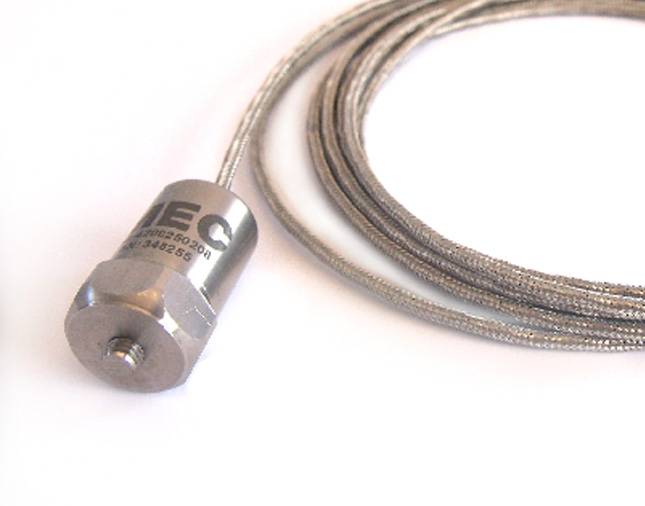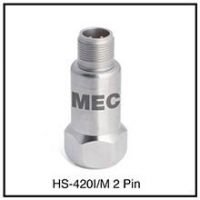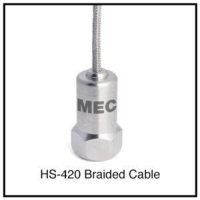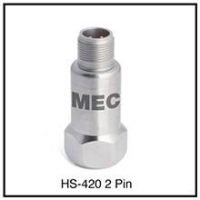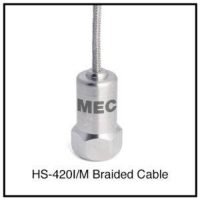- Home
- Vibration Sensors - Electric Motor Parts & Accessories Australia
Vibrations Sensors - Electric Motor Parts & Accessories Australia
Vibration Sensors Australia
The vibration of an asset can tell us essential information about its physical state. Firstly, the measurement characteristics might help us find and diagnose an issue before becoming too far gone. Vibration is the reaction from forces acting on the machine. Machines vibrate differently. As a result, different vibration transducers are available.
Selecting a Vibration Sensor
Make sure to use a particular vibration sensor in its correct environment. The technician should take the physical constraints into account; there must be enough room to install the sensor at the right location.
Securing and mounting cables, sealing connections, and one should consider a bracket design.
Suppose a machine design accepts a specific sensor type at certain locations; it is usually easier to follow those instructions. However, this may not be the best in terms of accuracy, to use any of those existing fixing points. Remember, only the right transducer, appropriately installed at the suitable locations, will provide good results.
Vibration Sensors and Applications.
Vibration Sensors play a vital role in predictive maintenance for all forms of rotating equipment like pumps, fans, and motors. Like in the metal industry, our 4-20mA vibration transmitters protect vital assets, including rolling mills as well as cooling towers.
In pharmaceuticals, these sensors protect the complete fan and motor assemblies in air handling units. Likewise, in wind power, our sensors prevent damage and keep turbines turning in all weathers.
We monitor cargo pumps, turbochargers, azipods, and even ventilation fans in marine applications to avoid machine failure and delays. Again in paper mills, our industrial vibration sensors are built to withstand aggressive conditions for total reliability.
Similarly, MEC sensors may monitor a pump and even a crusher in the mining and quarrying industry. Our vibration sensors monitor mixers, centrifuges, ovens, fans, and conveyors in the food and packaging industry.
Finally, in the cement sector, our 4-20mA sensors are used in critical condition monitoring systems on crushers, mills, and silos.
A Recent Example?
Two weeks after a new pump was installed in a remote area, an accelerometer set the alarm off on a PLC. As a result, the engineer arrived to find the shaft broken.
Control Systems
These sensors capture data locally or remotely using a Programmable Logic Controller (PLC), Building Management Systems (BMS), or 4-20mA input modules. Our company has a comprehensive range of cables, connectors, and accessories to make installation and operation quick and simple.
Sturdy and built to last, our vibration sensors and systems deliver precision measurements time after time, under the most demanding conditions. MEC vibration sensors help our customers improve their manufacturing and process systems’ reliability, performance, and profitability.
With the correct sensor to supply the essential operating information, the machine operates in a much safer condition for the machine and the machine operators. The different machine running requirements concerning temperature extremes, magnetic fields, vibration scale, frequency range, electromagnetic compatibility (EMC) & electrostatic discharge (ESD) conditions & the required signal quality require a diversity of sensors.
Measurement of vibration
The measurement of vibration is a complicated subject. SKF has optimised its range of vibration sensors to achieve the best performance, in a diversity of industrial applications, from its range of vibration instrumentation systems.
Vibration Sensor selection
The vibration sensor area is broad. A vibration sensor has many different attributes that may change, including measurement associated factors such as frequency response, sensitivity & accuracy. Physical attributes such as temperature rating, size & connector orientation are also factors.
The following is a guide to GlobalMecs experience in sensor use in the most general industrial sectors that use vibration monitoring. For each industry, the top four features demanded of a quality vibration sensor are stated & explained. Industrial sensor options are graded as follows:
- Good – A general-purpose option with adequate measurement & physical characteristics for condition monitoring programmes, where there is a trend for change & absolute precision, is not critical.
- Better –A general-purpose option that has adequate measurement & physical characteristics for condition monitoring programmes, but adds a particular feature such as an extended temperature range or mounting orientation adequately suited to the application.
- Best – A premium option with optimum measurement & physical characteristics and offers the most extended history as evidence of reliability. These are especially suited to critical machinery applications where the sensor uses safety-related purposes such as machinery protection.
GlobalMec offers an assortment of accessories that are available for vibration sensors, including sensor cables, connectors, mounting accessories, & much more.
Contact Us on admin@globalmec.com.au or 0478 824 931 for more information on our electric motor parts and accessories.
Velocity Transducers
Many use velocity transducers for asset condition monitoring and previous designs used a coil in conjunction with a fixed permanent magnet. Moving coil velocity sensors provide a sturdy and low interference signal. Therefore makes them perfect for low-frequency applications. Also, Moving coil sensors operate well in the orientation angle designated. For example, Suppose a coil sensor that a technician should install vertically has done so horizontally. In that case, the easily manipulated springs could allow the coil to drag against the magnet, introducing response inaccuracies. In newer piezoelectric sensors, vibration causes a deformation of the internal piezoelectrical crystal, which produces a charge difference between the crystal element’s opposite faces.
Piezoelectric velocity sensors need external power for the electronic amplifier and IC to work. However, they no moving parts making them very sturdy and reliable.
Acceleration Transducers
Many experts define More modern devices with incorporated piezoelectric velocity transducers as accelerometers that incorporate signal electronics into a sensor case. These instruments also provide a signal that has already been made into velocity units. Using integrated electronics in these sensors often eliminates noise and interference.
It is also possible to identify vibration with an accelerometer sensor and transform the signal to velocity units in the vibration monitoring device, or with vibration software. An advantage of making this integration inside the sensor case is that the acceleration signal to travel a far distance to reach the IC, so there is much less possibility for signal interference.
Accelerometers also use the piezoelectric crystal. Similarly, vibration causes a periodic deformation of the pre-mentioned internal crystal, which produces a charge difference between converse terminals of the component.
The sensing element in this design squashes between a reference mass and the bottom of the sensor casing. The shear-type accelerometer contains a ring-shaped component mounted to a circular post. The assembly will attach to a ring-shaped reference mass plus preloaded by a clamping band. Shear type sensors are less susceptible to thermal stresses and distortion of the lower sensor case.
Draw Wire Sensors
Draw wire sensors measure linear flow and displacement using a highly adaptable steel cable. The cable drum is connected to the sensor element, which provides a proportional yield signal based on the measured range. Our draw-wire sensors have a condensed design with easy and adjustable mounting for integration into machinery. They can also be easily customised to fit in high volume utilisation in OEM.
Our range of draw-wire vibration sensors allows quasi-infinite resolution with a maximum measurement range of up to 50m. They present long-term reliability and operational balance even under harsh ambient environments produced from high-quality components. Users can choose between analogue or digital output depending on their measuring specifications.
Draw Wire Measurement System
Draw wire displacement sensors measure linear progress using a highly flexible steel cable. The cable drum is connected to a sensor element which provides a proportionate output signal. Measurements are conducted with high accuracy and high dynamic response. The measuring drum is axially joined with a multi-turn potentiometer, an incremental encoder, or an absolute encoder. Thus, a linear flow is transformed into a rotary motion and transformed into a resistance variation or into countable increments. The use of high-quality components ensures a long life cycle and high operational dependability.
Linear Measurement Sensors
Linear position sensors measure the distance separating an object and a point of reference and differences in position. They do this by transforming displacement into an electrical yield. A wide assortment of measurement principles can be applied to let you make precise and reliable measurements for a wide range of utilisation. Linear position sensors and measurement systems are utilised in industrial applications as well as in scientific laboratories.
We are delighted to help you choose the most suitable sensor or measurement solution. Contact us for a free quote or estimate based on your requirements.

